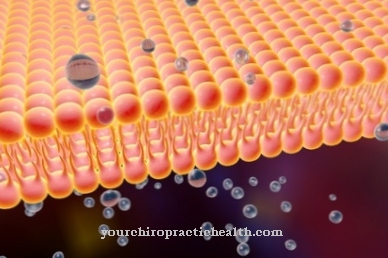The awareness is determined by complex neurophysiological processes of an individual. To this day it is difficult to explain the causes of conscious perception of the world. Disorders of consciousness manifest themselves in a variety of psychological diseases.
What is consciousness

It is not that easy to clarify what consciousness is and how it arises. Therefore there is no uniform definition for consciousness. From a scientific point of view, it is the totality of the mental states of an individual that are carried by complex neurophysiological processes.
How these neurophysiological processes can lead to states of consciousness, however, is controversial. So how can it be possible that the transmission of nerve stimuli or brain activities trigger certain sensations or feelings? How and why can these mental states be assigned to certain neural processes?
The physiological processes are subject to chemical and physical laws. So how do these processes come about and why do they create conditions that make the individual aware of his role in the environment?
The mystery of consciousness preoccupies both scientists and philosophers. Various theories have been developed to this day, but they cannot give a definitive explanation. All attempts to explain things are only approximations to this day. Consequently, there are different understandings when describing consciousness.
Function & task
The role of consciousness consists in making the environment aware of the individual. In this sense, life forms other than humans also have consciousness, albeit presumably to a lesser extent.
According to the scientific definition, mental states include all sensations, feelings, perceptions and cognitive abilities (i.e. thinking). In humans, consciousness has developed most strongly in the course of evolution. Thinking plays a particularly important role for him.
Historically, a species of primates seems to have had a need to plan ahead for its survival. The living conditions were probably so harsh that instinctive action alone would have led to human extinction.
At the same time, language has developed for better communication among individuals. On this basis, previous experiences could be passed on to subsequent generations.
In recent years, cognitive abilities have also become known in some animal species. In the case of monkeys, pigs, dolphins, elephants and various corvids, it was found that they can recognize themselves in the mirror. Some animal species also show foresight.
Every animal has certain sensations such as pain, hunger, thirst or satiety. These sensations are essential for survival. However, when one can speak of consciousness here is disputed. The boundaries are fluid depending on the definition. If feelings such as fear or even sadness and joy are already added to the sensations, one can speak of incipient consciousness. From the animal world, this is already well known to every dog owner who watches the companion with a wagging tail.
Often individuals (including humans) act unconsciously on instinct. Here the behaviors are either innate or are stored unconsciously in the brain.
Awareness also includes the perception of the natural environment. In humans, perception includes seeing, hearing, smelling, tasting and touching. The complex processes of consciousness serve the human being to process these perceptions while developing action strategies to his advantage.
You can find your medication here
➔ Medicines against impaired consciousness and memory problemsIllnesses & ailments
Illnesses that affect consciousness include all kinds of psychological, emotional and mental disorders. These diseases significantly affect the way people act. As a result, personality disorders can develop that require intensive psychological or psychiatric treatment.
Drug and alcohol addiction, as well as schizophrenia, often lead to the development of psychoses, which are associated with delusions and hallucinations. The affected person can no longer clearly identify with his "I".
Psychoses can also arise in the context of other illnesses such as dementia, severe trauma or comatose states. Serious diseases of the liver, kidneys or heart can also lead to psychoses.
A distinction is made between quantitative and qualitative disorders of consciousness. Quantitative disorders of consciousness are expressed in the clouding of vigilance (alertness). This is done in four stages. These manifest themselves starting with simple drowsiness, through somnolence (constant sleepiness), sopor (sleep-like state) to coma.
The causes of quantitative disturbances of consciousness are manifold. These include, among other things, an insufficient supply of oxygen to the brain in the event of cardiovascular diseases, stroke, epilepsy, increased intracranial pressure, traumatic brain injuries, poisoning or inflammation of the nervous system as well as hypoglycaemia or hypoglycaemia.
Qualitative disturbances of consciousness are spoken of in the case of clouding of consciousness, narrowing of consciousness and shifts in consciousness. Clouds of consciousness describe states of confusion in thinking and acting. These include symptoms such as disorientation, hallucinations or anxiety. These conditions can occur with schizophrenia, dementia, drug, alcohol, and medication abuse, or metabolic disorders.
When the consciousness is narrowed, the patient is only less responsive. This condition often develops in traumatic brain injuries, epilepsy or brain infections. Shifts in consciousness are expressed in a changed ability to perceive, which is paired with increased alertness. This is a typical state of incipient mania, drug abuse or even intensive meditation.
In addition to alcohol and other drugs, causes of qualitative disturbances of consciousness are also traumatic brain injuries, inflammatory diseases of the brain, poisoning, sleep deprivation or metabolic problems.
In the case of criminal behavior, if the offense is committed in a state of limited consciousness, the plea is incapable of guilt or of reduced culpability.













.jpg)

.jpg)
.jpg)











.jpg)